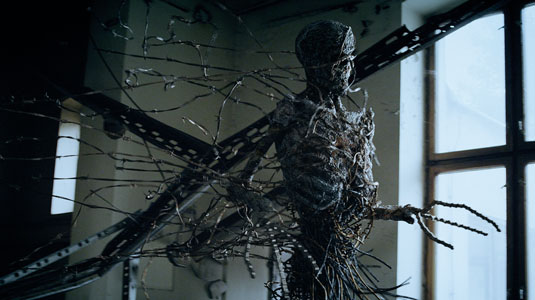How faster rendering is shaking up the CG business
2013 has become a turbulent year for VFX and animation. Here we look at how Solid Angle’s Arnold renderer is set to shake up the industry.

For years, Arnold was Hollywood’s best-kept secret. A highly optimised raytrace renderer, the software was first adopted by Sony Pictures Imageworks (where creator Marcos Fajardo then worked): initially on Cloudy with a Chance of Meatballs, then as the studio's primary production workhorse, and later by other leading studios including Digital Domain and Framestore.
Yet Arnold's conquest of high-end visual effects has been achieved almost entirely in silence. By 2012, fxguide could note: "The product is 'hot' and yet remarkably unavailable. If you go to [developer] Solid Angle's website, you will be greeted with just a logo (and an equation, if you can find it). No sales page, no specs, no PR, no user stories – nothing.”
Arnold is set to take on the mass market
One year on, the Solid Angle website looks no different, but Arnold is set to take on the mass market. The software is now used on a wide range of lower-budget visual effects projects - from episodic TV to indie films - and is set to become available to individual artists before the end of the year.
From Titans to dragons
Framestore first began using Arnold on movies like 2012's Wrath of the Titans, but quickly rolled out the renderer to its commercials division. Over the past year, it has been used on high-profile spots for Mercedes, Galaxy and Qualcomm's Snapdragon chips.

"Initially we were drawn to the efficiency and simplicity of the workflow - but primarily we like using it because we get pretty images faster," the company told us in a written statement assembled by senior TDs Andy Rowan-Robinson and James Dick and Framestore NY's head of 3D commercials, David Mellor.
We were drawn to the efficiency and simplicity of Arnold's workflow
"The subtle indirect lighting allows us to get closer to reality than many other renderers - it has a more physically accurate way of calculating things - so we get to spend more time making things look nice and less time troubleshooting in compositing."
Framestore now uses Arnold "pretty much as standard" (except for interior scenes, where noise can be an issue), using almost no custom code bar the studio's own pass-management system.
Exactly how well Arnold runs out of the box can be gauged from Our Lady of Lourdes, a 20-minute visual effects short created by indie director/VFX supervisor Peter Szewczyk. Szewczyk originally planned to use 3Delight and RenderMan for Maya for the film's 40 VFX shots, but switched to Arnold midway through production.

"24 hours after I unpacked the software, I had already managed to port over my shaders and render out an entire shot overnight," he says. "There was virtually no learning curve at all."
Szewczyk, who has worked at Weta and Double Negative, describes Arnold's performance as "flat-out incredible", even on the consumer laptop on which most of the shots were rendered. "With most renderers, there is something that will just grind the software to a halt, but with Arnold, I would keep increasing the complexity, turning on more and more features, and it would still power right through the frame," he says.
Words: Jim Thacker
Solid Angle aims to start selling licences of Arnold later this year. Prices start at €1,000 per single permanent licence. Annual support and maintenance is €225.
Liked this? Read these!
- ZBrush tutorials: ways to paint and sculpt in 3D
- Top free 3D models
- Best 3D movies of 2013

Thank you for reading 5 articles this month* Join now for unlimited access
Enjoy your first month for just £1 / $1 / €1
*Read 5 free articles per month without a subscription

Join now for unlimited access
Try first month for just £1 / $1 / €1
Get the Creative Bloq Newsletter
Daily design news, reviews, how-tos and more, as picked by the editors.

The Creative Bloq team is made up of a group of art and design enthusiasts, and has changed and evolved since Creative Bloq began back in 2012. The current website team consists of eight full-time members of staff: Editor Georgia Coggan, Deputy Editor Rosie Hilder, Ecommerce Editor Beren Neale, Senior News Editor Daniel Piper, Editor, Digital Art and 3D Ian Dean, Tech Reviews Editor Erlingur Einarsson, Ecommerce Writer Beth Nicholls and Staff Writer Natalie Fear, as well as a roster of freelancers from around the world. The ImagineFX magazine team also pitch in, ensuring that content from leading digital art publication ImagineFX is represented on Creative Bloq.
